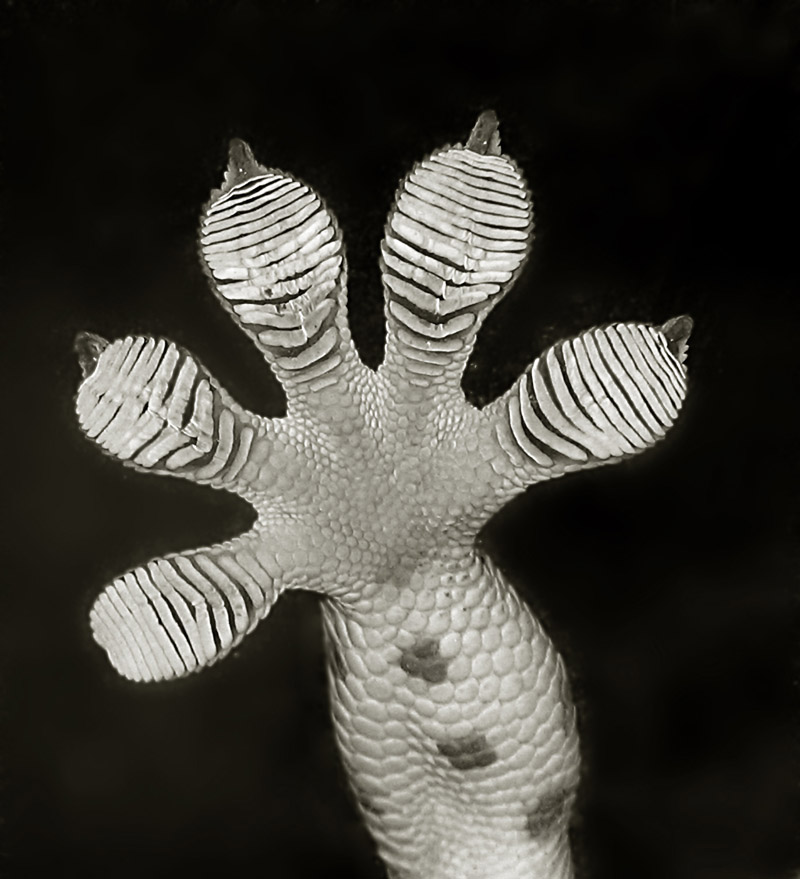People have been fascinated by the ability of lizards called Geckos to chase their insect prey - not just on the ground, but up walls and even across the ceiling. Many scientists have tried to emulate their abilities, but up until now they have not managed to achieve the same level of stickiness.
 If you put two atoms very close together they will attract one another by what is called the van der waals force. This force holds materials like wax together, but normally if you push two objects together they don't stick because their surfaces are so rough that only very small areas touch. Geckos get around this by having millions of tiny hairs on their feet, hairs which branch into even tinier hairs at their ends. These hairs are flexible which means that when the Gecko pushes its feet onto the wall a large proportion of the tiny hairs are within an atoms breadth of the surface of the wall and so will stick to it. With feet like these, a Gecko can hold up about ten newtons of weight for every square centimeter of 'toe', (10N/cm2).
If you put two atoms very close together they will attract one another by what is called the van der waals force. This force holds materials like wax together, but normally if you push two objects together they don't stick because their surfaces are so rough that only very small areas touch. Geckos get around this by having millions of tiny hairs on their feet, hairs which branch into even tinier hairs at their ends. These hairs are flexible which means that when the Gecko pushes its feet onto the wall a large proportion of the tiny hairs are within an atoms breadth of the surface of the wall and so will stick to it. With feet like these, a Gecko can hold up about ten newtons of weight for every square centimeter of 'toe', (10N/cm2).
Scientists have been trying to copy this technique using carbon nanotubes, as they can be long and thin like the hairs on the Gecko's toes. So far, they've not had much success, but now, Liming Dai and colleagues at the University of Dayton have used carbon nanotubes with very flexible tangled ends. If you push them onto a material then the the tangled ends get very close to the surface, and stick through van der walls effects. If you then try to slide it off, the flexible ends of the tubes will drag across the material increasing the area of contact and therefore the stickyness.
Material made from these nanotubes is capable of supporting a force of 100N (or 10kg), but it does need to be pushed on to the wall with about 50N for every square centimeter in order to make it stick. This is far more than a real geckos foot requires and would make a spiderman suit a bit impractical.
However, it does have some other advantages - the nanotubes conduct electricity so it could be used instead of solder for making good electrical contacts, and, unlike many glues, they won't be affected by the vacuum of space.
So, for now, they will probably be more useful holding spaceships together than allowing people to climb buildings like their favourite web-slinging superhero!










Comments
Add a comment